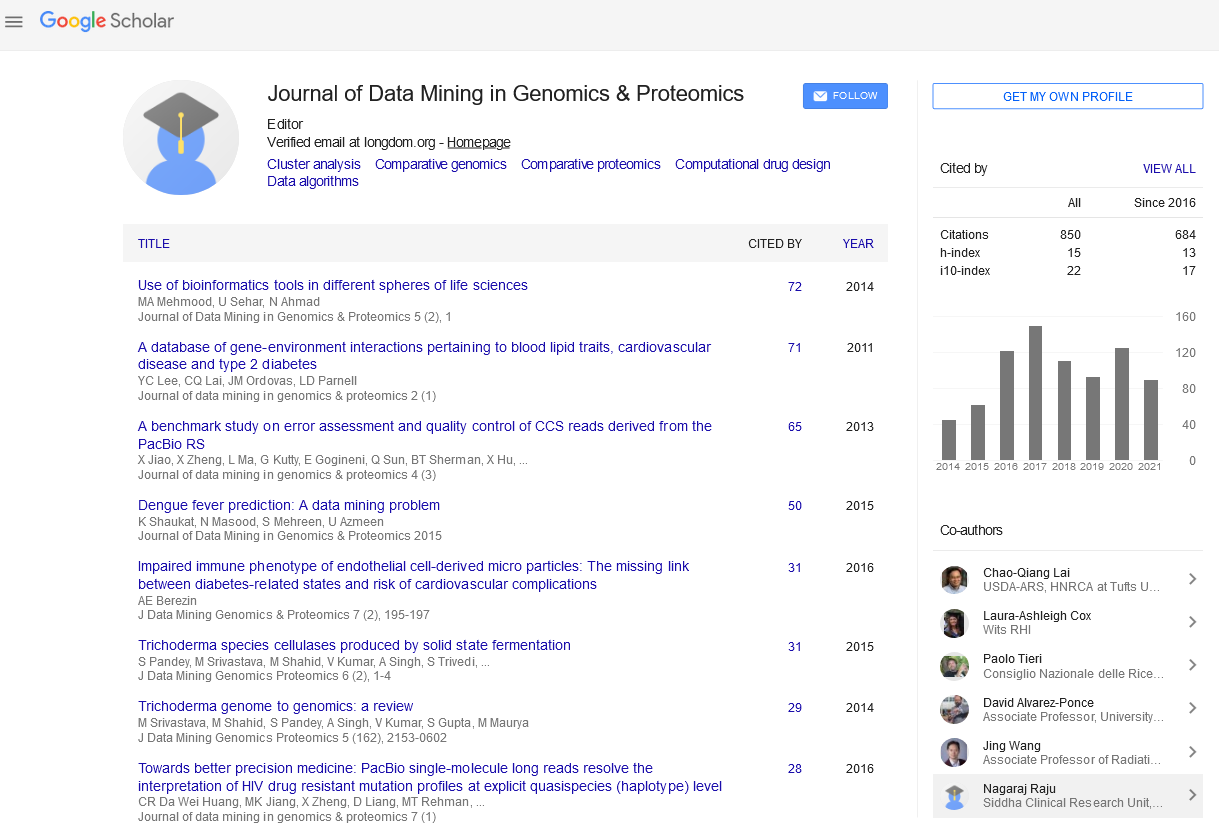PMC/PubMed Indexed Articles
Indexed In
- Academic Journals Database
- Open J Gate
- Genamics JournalSeek
- JournalTOCs
- ResearchBible
- Ulrich's Periodicals Directory
- Electronic Journals Library
- RefSeek
- Hamdard University
- EBSCO A-Z
- OCLC- WorldCat
- Scholarsteer
- SWB online catalog
- Virtual Library of Biology (vifabio)
- Publons
- MIAR
- Geneva Foundation for Medical Education and Research
- Euro Pub
- Google Scholar
Useful Links
Share This Page
Journal Flyer

Open Access Journals
- Agri and Aquaculture
- Biochemistry
- Bioinformatics & Systems Biology
- Business & Management
- Chemistry
- Clinical Sciences
- Engineering
- Food & Nutrition
- General Science
- Genetics & Molecular Biology
- Immunology & Microbiology
- Medical Sciences
- Neuroscience & Psychology
- Nursing & Health Care
- Pharmaceutical Sciences
Abstract
Bioinformatics and Evolution of Vertebrate Pancreatic Lipase and Related Proteins and Genes
Roger S Holmes and Laura A Cox
Background: Pancreatic lipase (PTL) functions in the presence of colipase in the hydrolysis of emulsified fats in the small intestine following secretion from the pancreas. Pancreatic lipase related protein 1 (PLR1) is also found in pancreatic secretions and may perform a regulatory role in lipolysis; PLR2 catalyses pancreatic triglyceride and galactolipase reactions while PLR3 may serve a related but unknown lipase function. Comparative PTL, PLR1, PLR2 and PLR3 amino acid sequences and structures and gene locations and sequences were examined using data from several vertebrate genome projects.
Methods: Sequence alignments and conserved predicted secondary and tertiary structures were studied and key amino acid residues and domains identified based on previous reports on human and pig PTL. Comparative analyses of vertebrate PTL-like genes were conducted using the UC Santa Cruz Genome Browser. Phylogeny studies investigated the evolution of these vertebrate PTL-like genes.
Data: Human and mouse PTL sequences shared 78% identities but only 64-68% identities with human and mouse PLR1 and PLR2 sequences. Several vertebrate PTL and PTL-like protein domains were predicted using bioinformatics including an N-signal peptide; N-glycosylation site(s); an α/β hydrolase fold region containing a catalytic triad; a ‘lid’ region for the active site; a ‘hinge’ separating the lipase and PLAT regions; and a C-terminal PLAT region. Eutherian mammalian PLR1 sequences retained residues (196Val/198Ala) responsible for the loss of triacylglycerol lipase activity whereas lower vertebrate PLR1 sequences retained the ‘active’ lipase residues. In contrast, mammalian PTL, PLR2 and PLR3 sequences exhibited lipase ‘active’ residues (196Ala/198Pro); chicken and frog PLR1 sequences retained the lipase ‘active’ residues; and opossum and platypus PLR1 sequences exhibited 196Ala/Ser198 and 196Ser/198Pro residues. A phylogenetic tree analysis provided evidence for four distinct vertebrate PTL-like gene families.
Conclusions: Pancreatic lipase (PTL) and related genes and proteins (PLR1 and PLR2) are present in all vertebrate genomes examined whereas PLR3 is found only in primate genomes. The ‘inactive’ form of vertebrate PLR1 is restricted to eutherian mammals. Vertebrate PTL-like genes apparently originated in a vertebrate ancestor following gene duplication events of an ancestral PTL-like ancestral gene. Two separate lines of PTL-like gene evolution are proposed in lower vertebrates (PTL/PLR1 and PLR2), with a further gene duplication event (PLR2/PLR3) for primate genomes.


